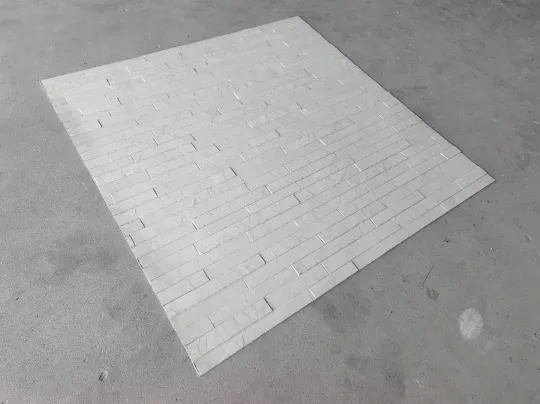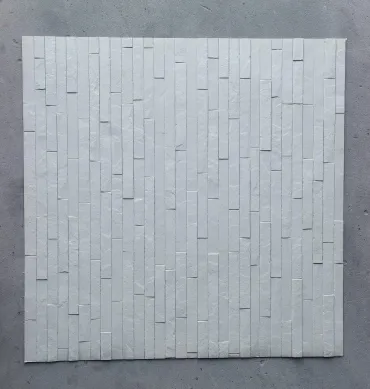
Top 10 Masonry Stone Companies in the World

You know that feeling when you run your fingers along a perfectly finished stone surface? That cool, ancient-solid sensation that whispers centuries of craftsmanship? It's no accident - behind that tactile magic are innovators who've perfected the alchemy of turning mountains into monuments. The stone industry has evolved far beyond simple quarries into high-tech artistry where tradition shakes hands with innovation.
Having explored quarries from Brazil's tropical highlands to Italy's marble mountains, I've seen firsthand how these companies blend geological science with Michelangelo-like vision. The industry's heartbeat has quickened with new technologies, but its soul remains in the patient hands that transform rock into poetry. Let's meet the 10 visionaries currently reshaping our world's skyline - one slab at a time.
European Stone Giants: Where Heritage Meets Hyper-Precision
Levantina (Spain)
When my Spanish architect friend Rafael showed me his Barcelona project, I nearly gasped at the cream-colored marble flowing through the lobby like petrified cream. "Levantina's Crema Marfil," he whispered reverently. Founded in 1959, this Spanish powerhouse treats stone like liquid art. What makes them special isn't just their quarries (though owning the planet's largest Crema Marfil deposit helps), but how they've made stone breathe with modern life .
Their magic touches:
- Transforms their signature marble into entire architectural facade solutions
- Techlam ultra-compact surfaces that defy traditional limitations
- Water recycling systems that give Mother Nature a standing ovation
When I visited their Alicante facility last spring, the project manager grinned as he showed me marble being laser-cut into forms thinner than my iPhone. "We're not selling stone," he said, dust sparkling in his eyelashes. "We're selling possibilities."
Margraf (Italy)
If stones had royalty, Margraf's Carrara marble would wear the crown. Walking through their Vicenza showroom feels like browsing geological jewelry - each slab more breathtaking than the last. Their century-old craftsmanship collides beautifully with robotic polishing tech that achieves mirror finishes previously impossible. What struck me wasn't just their semi-precious stone collections (though the malachite-green marble haunts my designer dreams), but their dedication to creating stone ecosystems - every chip reused, every drop conserved.

North American Innovators: Merging Scale with Soul
A&G Marble (USA)
The first time I saw A&G's onyx installation in a Miami penthouse, sunlight streaming through the translucent stone, I understood why stone can make architects weep. This Georgia-born company brings European artistry to American practicality. Their true genius lies in storytelling through geology - each slab selected like characters in a mineral epic. When project manager Elena Rodriguez explained how they matched 137 granite panels for a Dallas museum's wave-like facade, her hands moved like a conductor's.
Apex Stone (USA)
"We don't cut stone, we liberate it," Apex's founder told me during my Texas visit. This relatively young player punches above its weight with hybrid vigor - traditional craftsmanship enhanced by AI-powered precision cutting. Their showstopper? Quartz installations combining durability with visual jazz. What I love is their scrappy innovator energy - turning waste chips into terrazzo masterpieces rather than landfill filler.
Asian Powerhouses: Where Ancient Meets Algorithm
UMGG (China)
Stepping into UMGG's Yunfu facility feels like entering a mineral cathedral. Founded in 1999, they've scaled from local workshop to global force through relentless innovation. Their engineered quartz surfaces might look industrial, but run your hand across them - they pulse with organic warmth. What impressed me during my tour wasn't their sheer output volume (enough to clad skyscrapers annually), but the artisan training program preserving carving techniques threatened by automation.
XISHI Group (China)
XISHI strikes the perfect balance - marrying Beijing's Great Hall restoration projects with Dubai's futuristic fantasies. Their secret? A waterjet mosaic process creating intricate landscapes from stone fragments. When discussing architectural facade solutions, their engineers get philosophical: "We're geological translators," one told me while showing me digitally printed marble that captured Van Gogh's starry night in stone.
Oceanian Specialists: Crafting Stone Ecosystems
CDK Stone (Australia)
CDK treats stone like living tissue - requiring specialized care from quarry to installation. What sets them apart isn't just their New Zealand and Australia facilities, but their holistic approach. I recall their Melbourne director explaining rain-screen cladding systems like a doctor describing anatomy: "Stone needs to breathe - trapping moisture is how buildings get sick."
Euro Marble (Australia)
Watching Euro's team match swirling travertine patterns felt like observing master puzzle solvers. Their specialty lies in creating coherent geological narratives across vast spaces - no small feat when dealing with nature's randomness. Their Sydney workshop features a "stone library" where clients can physically experience materials before committing.
South American Soul: Mining Mountains with Conscience
Votorantim (Brazil)
You'd expect grandeur from Brazil's stone giants, but Votorantim's real surprise is humility. Beyond creating monumental building facades, they've pioneered stone dust sequestration techniques turning waste into carbon capture allies. When they showed me schools built from quarry byproducts in São Paulo communities, I witnessed stone's full circle journey from mountain to education sanctuary.
Vitoria Stone (Brazil)
Vitoria transforms Espírito Santo's exotic granites into geological showpieces. Their Blue Bahia slab doesn't just decorate walls - it captures Atlantic Ocean blues in mineral form. What makes them exceptional is their water stewardship, developing closed-loop systems allowing their facilities to consume less water than a luxury hotel spa.
Industry Evolution: From Chisels to Algorithms
Three revolutions reshaping stone:
- Digital Twins: Creating virtual replicas allowing architects to walk through stone installations before cutting begins
- Bio-mimicry: Studying how limestone formations naturally brace against pressure to inspire new stacking techniques
- Blockchain Quarrying: Tracing each slab's geological DNA from mountain to museum
These pioneers understand that stone's future lies not in exploiting earth but conversing with it. I recall Levantina's chief geologist showing me vein maps like palm reading charts: "Each stone tells its history in mineral language - we're just translators."
Beyond Beauty: Stone as Living Architecture
The real magic happens when these material masters collaborate with visionaries like Singapore's green skyscraper innovators or Dubai's cloud-piercing sculptors. UMGG recently collaborated on a Hanoi structure using porous travertine as natural climate control - stone breathing for the building.
This evolution reflects our changing relationship with nature - from dominance to dialogue. Vitoria's reclaimed quarries now serve as aquatic ecosystems, while HeidelbergCement's solar-powered saws hum like meditations on sustainable creation.
Selecting Your Stone Partner: Trust Your Fingertips
Having sourced materials for projects from Riyadh to Reykjavik, I've learned that selecting stone partners requires tactile intelligence:
The hand test:
- Does the surface temperature feel alive rather than clinically cold?
- Do veining patterns tell stories rather than just display design?
- Does your supplier discuss geological history like family lore?
Exceptional companies share certain traits - they handle samples like fragile heirlooms, discuss quarry water recycling like environmental activists, and describe matching mineral patterns like matchmakers.
Carving Forward: Stone's Renaissance Era
As I walked through CDK's Melbourne workshop last summer, watching an artisan brush sealant onto bluestone like a priest anointing sacred text, I realized stone's next chapter isn't about building bigger - but building wiser. These companies aren't just selling slabs; they're offering geological relationships. The quarries powering them have become laboratories for environmental repair rather than extraction zones.
The future belongs to those who understand that beneath the technical mastery - the robotic cutting and nano-sealing - lies something profoundly human: our eternal conversation with the earth beneath our feet. And how deeply reassuring to know that in our glass-and-steel future, we'll still trace comfort along cool stone surfaces that remember mountain tops and ancient seas.
Tags:
Recommend Products











